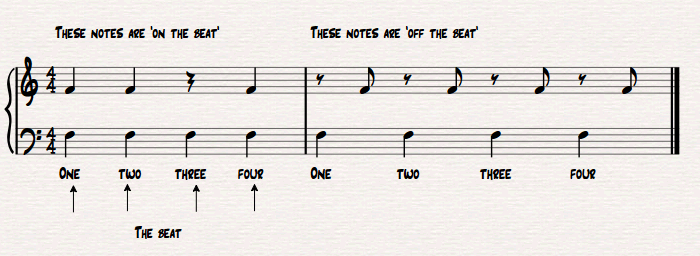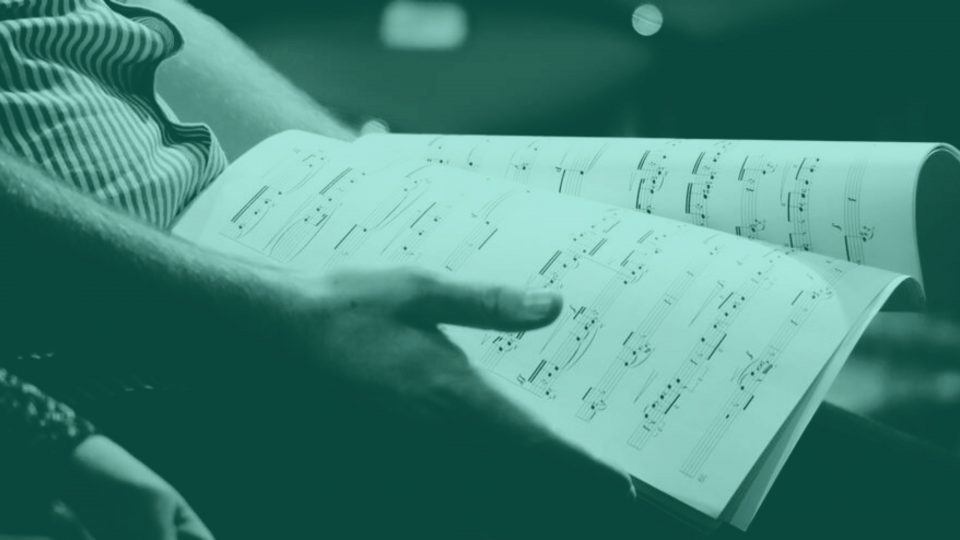Upbeats and Downbeats, What’s the Difference?
When it comes to listening to music, people like to listen to the beat, the melody, and/or the lyrics. They don’t care much about the structure of the music itself – despite how it makes them feel.
But if you’re an aspiring producer or artist, your journey to understanding music must include a better understanding of structure – and that of beats.
A confusing topic, but beat types are integral to how we perceive rhythm. This is why beats are important to music! The beat is responsible for keeping elements of a track in time. From downbeats, upbeats, backbeats, strong and weak beats, beats dictate how fast or how slow a song is.
We’ve covered backbeats, as well as strong and weak beats in previous articles which we have linked above. Now it’s time for a hyper-focus on downbeats and upbeats!
Downbeats in Music
A bar is made up of beats. In 4/4 time, there are four beats. Each beat is the downbeat of the bar.
If you took a music class, you would have “1 and 2 and 3 and 4” be said to signal you all to begin playing after “4”. The numbers signify the beats of the bar. Well, the 1, 2, 3, and 4 can all be the downbeats, or “on beat”.
When your teacher says “1 and 2 and 3 and 4”, the numbers signify the downbeat.
However, the very first beat of a song is also downbeat. The downbeat is the very first pulse of a rhythm that we hear at the beginning of a song, as well as each time a new phrase begins.
The downbeat is also the very first beat/pulse of a rhythm.
In a classical performance, a conductor signals the beginning of the downbeat by way of making a downward stroke with his stick. This symbolizes the very first note that is accented in the music, as the downbeat is the strongest part of a rhythm.
Upbeats in Music
In contrast to the downbeat, the upbeat is the last beat preceding the downbeat.
Going back to our music class example, “1 and 2 and 3 and 4”, the numbers signify the downbeats as we said. That’s because downbeats are accented and emphasized. The upbeat, on the other hand, is unaccented and not emphasized.
But the upbeat is heard before every downbeat. When your class teacher said, “1 and 2 and 3 and 4”, the “and” between every downbeat signifies the upbeat, otherwise known as the offbeat.

The upbeat is heard before every downbeat. When your class teacher said “1 and 2 and 3 and 4”, the “and” between every downbeat signifies the upbeat!
Now it’s time to put your new knowledge of beats into practice with the use of some epic samples.
The sampling revolution has risen in popularity and shaped music since the early 1970s. Sample culture continues to transform how millions of artists and producers do their thing in DAWs.
You too can break conventional norms, challenge the status quo, and open Pandora’s box of sound design.
Mixxed works with a growing number of sample labels and contributors to provide you with an affordable sample subscription service that’s more accessible than any before.
You’ll have access to our growing catalog of loops, one-shots, and sound effects that you can browse, download and keep forever for less than $3 a month.
Sign up today to find your sound!
